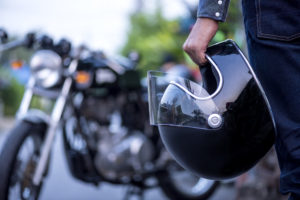In the last two months, sixteen UHP troopers have been struck by vehicles while on the job and eight cruisers have been totaled. In response, several of the injured troopers held a press conference yesterday to make a plea to the motoring public for trooper safety. Specifically, the UHP asks that if you see emergency lights ahead of you, slow down, move over and look for hazards in order to give troopers enough space to do their jobs. The UHP also asks that people pay special attention to avoiding the usual distractions when in the area of stopped emergency vehicles – no cell phone talking, no texting, no changing radio stations, etc.
In addition, the UHP offers the following suggestions on its website for what to do if you see an emergency vehicle approaching from behind:
Responding to an emergency is probably the most dangerous situation that a trooper faces on a daily basis. The danger is mostly due to the unpredictability of other motorists. Every trooper has a story:
- The vehicle that pulls in front of them.
- The driver that they follow for more than a mile.
- The driver that stops in the middle of the freeway.
- The driver that pulls to the left.
- The driver that suddenly jams their brakes when they see the lights.
So what should you do?
Always be aware of what is going on around you.
The driver that the trooper follows for a long distance is usually distracted by something that is going on in the vehicle. It could be your kids or other occupants. Maybe it’s that cell phone or the CD player. Whatever it is that’s distracting you could place you, your passengers, other motorists, and our troopers in danger.
Never assume that the lane that was clear a few seconds ago is still clear.
A trooper responding to an emergency may be traveling at a high rate of speed. That’s approximately 150 feet per second. What was clear a few seconds ago may not be clear now. Get in the habit of checking the lane you want to move into. Signal your intention, check what’s going on around your vehicle, check your intended lane again, and then make the lane change.
Don’t PANIC!
It probably will startle you when you see red and blue lights in your rear view mirror.Take a deep breath, check what’s going on around your vehicle, and carefully move out of the way. It the trooper follows you, they may be trying to get to an exit or, take another deep breath, they may be stopping you. Whatever the situation, keep carefully moving to the right until one of two things happen; the trooper passes, (sigh of relief), or you make it to the right shoulder and stop.
Move to the Right, Never to the Left!
State law requires the driver of a vehicle, when an emergency vehicle approaches, to move to the right and stop. On the freeway the stopping part is not always practical. What you can do is keep gradually slowing, moving carefully to the right, until the trooper passes.
Never assume there is only one emergency vehicle.
Many of the emergency vehicles involved in a crash were following another emergency vehicle. After the first emergency vehicle passes always look for other emergency vehicles.
What if you’re stopped at an intersection?
If you are stopped at an intersection, stop sign or stop light, and you can do so safely, move to the right. If you’re blocked in, stay put and let the emergency vehicle find a way around you. It may have to move into the on-coming traffic lanes, so it is equally important that the vehicles traveling in the opposite direction move to the right and stop as well. There may be the occasion when there is no way around. If the emergency vehicle stops behind you with its lights and siren on, carefully move forward and to the right, but only if it is safe to do so. If not, wait for the light to change.
There are many times when a few minutes or even seconds can make the difference. That’s why we are attempting to get to the individuals that have been involved in an incident as quickly as possible. Our obligation is to do so in a manner that doesn’t needlessly endanger the motoring public or our troopers. You also have a part to play and we need your assistance.
Troopers are out there every day risking their lives to keep the rest of us safe. The least we can do is to give them the space to do their jobs as safely as possible.

Bret Hanna of Wrona DuBois in Utah, focuses exclusively on litigating plaintiffs’ medical malpractice and catastrophic personal injury cases. He has represented clients in state and federal courts, in mediations, and in administrative proceedings in Michigan and Utah since 1991.










Comments for this article are closed.